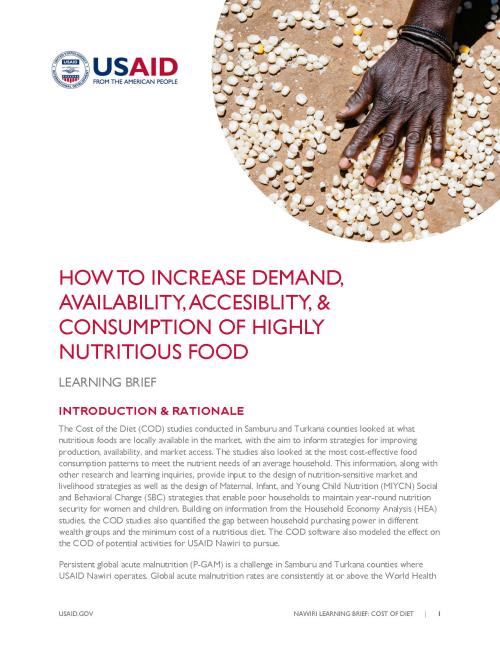The cost of diet studies looked at what nutritious foods are locally available in the market to inform strategies for improving food production, availability, and access. The studies also looked at the most cost-effective food consumption patterns to meet the nutrient needs of an average household. The objectives of the studies were to identify the most cost-effective nutrient-dense foods locally available in markets, determine the reported frequency of consumption (or non-consumption) of these foods by households, and calculate the minimum cost of a nutritious diet. Data collection methods included market surveys, key informant interviews, focus group discussions, and individual dietary habit interviews. The study found significant variation in the average cost of a nutritious diet across livelihood zones, with limited purchasing power in all zones. Availability of a variety of foods was more limited in smaller markets. Women’s decision making power was stronger when they had their own sources of income. The study also identified the availability of cost-effective nutrient-dense foods—at least in the larger markets—that are not consumed by the average household as frequently as recommended. This learning has contributed to the design of nutrition-specific maternal, infant, and young child feeding strategies and nutrition-sensitive livelihoods and markets strategies and programming that enable poor households to maintain year-round nutrition security for women and children and support the sustainable reduction of persistent acute malnutrition in the face of shocks and stresses.
Learning Brief
Full Report(s)
